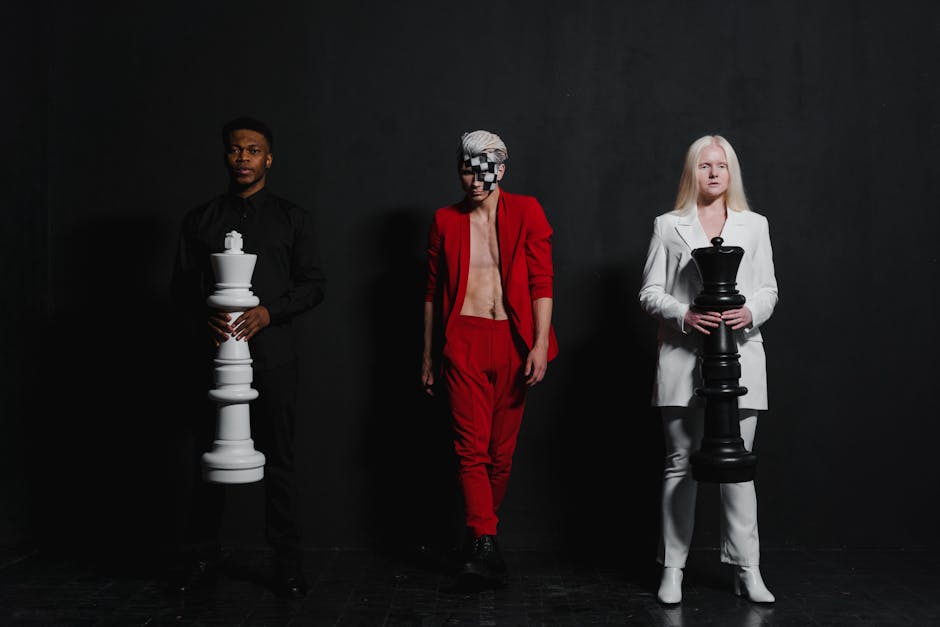AI vs Human: The Ultimate Battle for Creativity
In the ever-evolving realm of technology, the debate over artificial intelligence (AI) and its impact on human creativity is more relevant than ever. As AI continues to grow in sophistication, the question arises: Can machines truly replicate the creative spark that defines the human experience? 🤔 Let’s dive into this intriguing battle between AI and human creativity.
Understanding Creativity: Human vs Machine
Creativity is often seen as the pinnacle of human intelligence, a unique ability to generate novel and valuable ideas. It encompasses a wide range of activities from painting a masterpiece to composing a symphony or even crafting a compelling narrative. But how does AI fit into this picture?
AI, powered by machine learning algorithms, can analyze vast amounts of data, identify patterns, and even generate content that mimics human creativity. Yet, does this mean AI is truly creative, or is it merely imitating what it has learned from human inputs? 🤖
The Human Touch: What Machines Can’t Do
One of the key arguments in favor of human creativity is the emotional depth and personal experience that individuals bring to their work. Creativity is not just about producing something new but also about infusing it with meaning and context. A painting inspired by personal loss or a song born from a joyous moment carries an emotional weight that a machine cannot replicate.
Moreover, humans possess the ability to think outside the box, often arriving at innovative solutions through intuition and diverse life experiences. This unpredictable element of human creativity is something machines struggle to emulate, as they rely heavily on existing data and algorithms.
AI’s Role in Enhancing Creativity
While AI might not possess the intrinsic creativity of a human, it certainly plays a significant role in enhancing and supporting creative processes. AI tools can assist artists, writers, and musicians by offering new perspectives, generating ideas, and even handling mundane tasks, freeing up time for creators to focus on the more intricate aspects of their work.
For instance, AI can analyze music trends and suggest chord progressions or create visual art by learning from existing styles. This collaboration between AI and human creativity is not about replacing artists but rather augmenting their capabilities. 🎨
Case Studies: AI in the Creative World
Let’s look at some real-world examples where AI has made a significant impact on creativity:
1. Music Composition
AI has ventured into the world of music, composing pieces that range from classical symphonies to pop songs. Tools like AIVA (Artificial Intelligence Virtual Artist) have been used to create original compositions that, while impressive, often require human intervention to refine and add emotional nuance.
2. Visual Arts
In the visual arts, AI has produced stunning artworks that have been showcased in galleries worldwide. An example is the portrait “Edmond de Belamy,” created by the French art collective Obvious using a generative adversarial network (GAN). Although AI generated the image, the concept and curation were human-driven.
3. Writing and Storytelling
AI has also dipped its toes into writing, generating news articles and even novels. Tools like OpenAI’s GPT-3 can produce coherent text, yet the intricacies of character development, plot twists, and emotional depth still rely heavily on human writers.
The Future of Creativity: A Collaborative Approach
The future of creativity lies in the seamless collaboration between humans and machines. AI’s ability to process and analyze data at a scale unimaginable to humans can be harnessed to push the boundaries of creativity further. By embracing AI as a tool rather than a competitor, we can explore new creative frontiers and enhance our artistic expressions. 🚀
Imagine a world where artists and AI work hand in hand, each bringing their unique strengths to the table. This synergy can lead to groundbreaking innovations and experiences that captivate and inspire audiences globally.
Conclusion: Embracing the Creative Synergy
The battle between AI and human creativity is not a zero-sum game. Instead, it’s an opportunity to redefine what creativity means in the modern age. While AI can mimic and even enhance creative processes, it lacks the emotional depth and experiential insights that make human creativity so profound.
By leveraging AI as a partner in the creative process, we can unlock new levels of innovation and artistry. The ultimate goal is not to determine whether AI can replace human creativity but to explore how both can coexist and thrive in a symbiotic relationship. After all, the true essence of creativity lies in the ability to adapt, evolve, and inspire—qualities that both humans and AI can contribute to the vibrant tapestry of art and innovation. 🌟

Leave a Reply